Graptoveria is a hybrid genus that pairs echeveria species with Graptopetalum species. Their strongest characteristics are that they are quick to offset, and the leaves are much thinner than their parent plants.
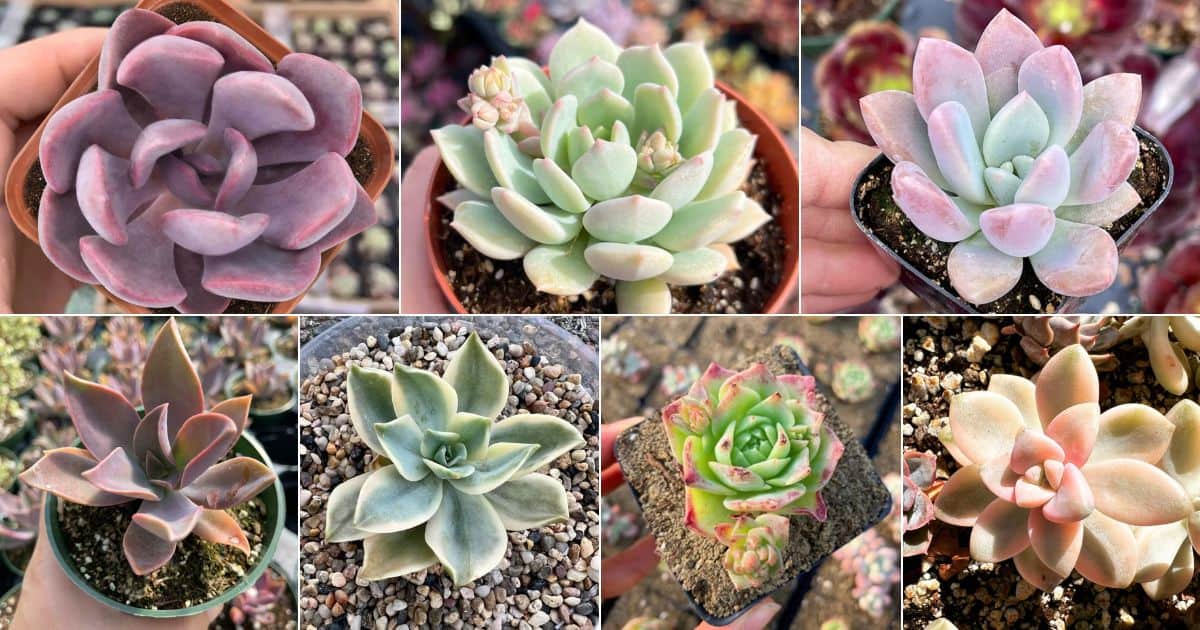
Many of them don’t have an actual Latin name and are often identified by patents or by names chosen by breeders.
Jump to:
1. Fred Ives
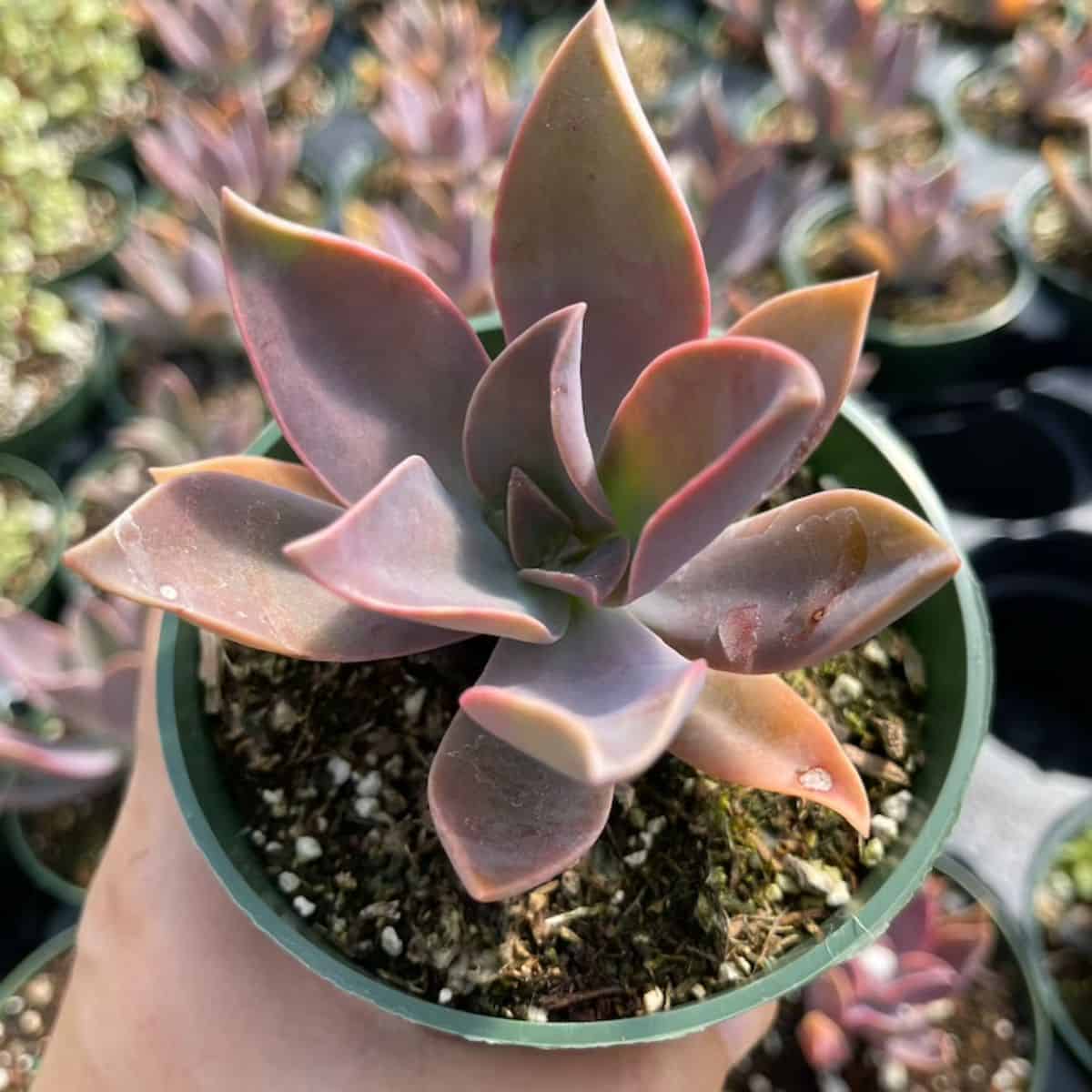
Buy it from:
| Maximum Height | 8 inches |
| Maximum Width | 12 inches |
| Watering Needs | Tolerates neglect, soak when dry |
| Soil Needs | Well-draining and gravelly |
| Light Needs | Full Sun |
| Hardiness Zone(s) | Zone 9 and up |
| Bloom Color | Yellow |
| Bloom Type | Star-shaped |
| Leaf Type | Spatula shaped with narrow base; leaves curve upward. |
| Growth Type | Open Rosette with Lots of Offsets |
A cross of Graptopetulum paraguayense and Echeveria gibbiflora, Fred Ives is perhaps one of the most popular species of Graptoveria. If any succulent could be called a rainbow succulent, it would be this one. With color changes throughout the year, Fred Ives can have deep purples, gorgeous golds, and even pastel greens that come through.
2. Moonglow
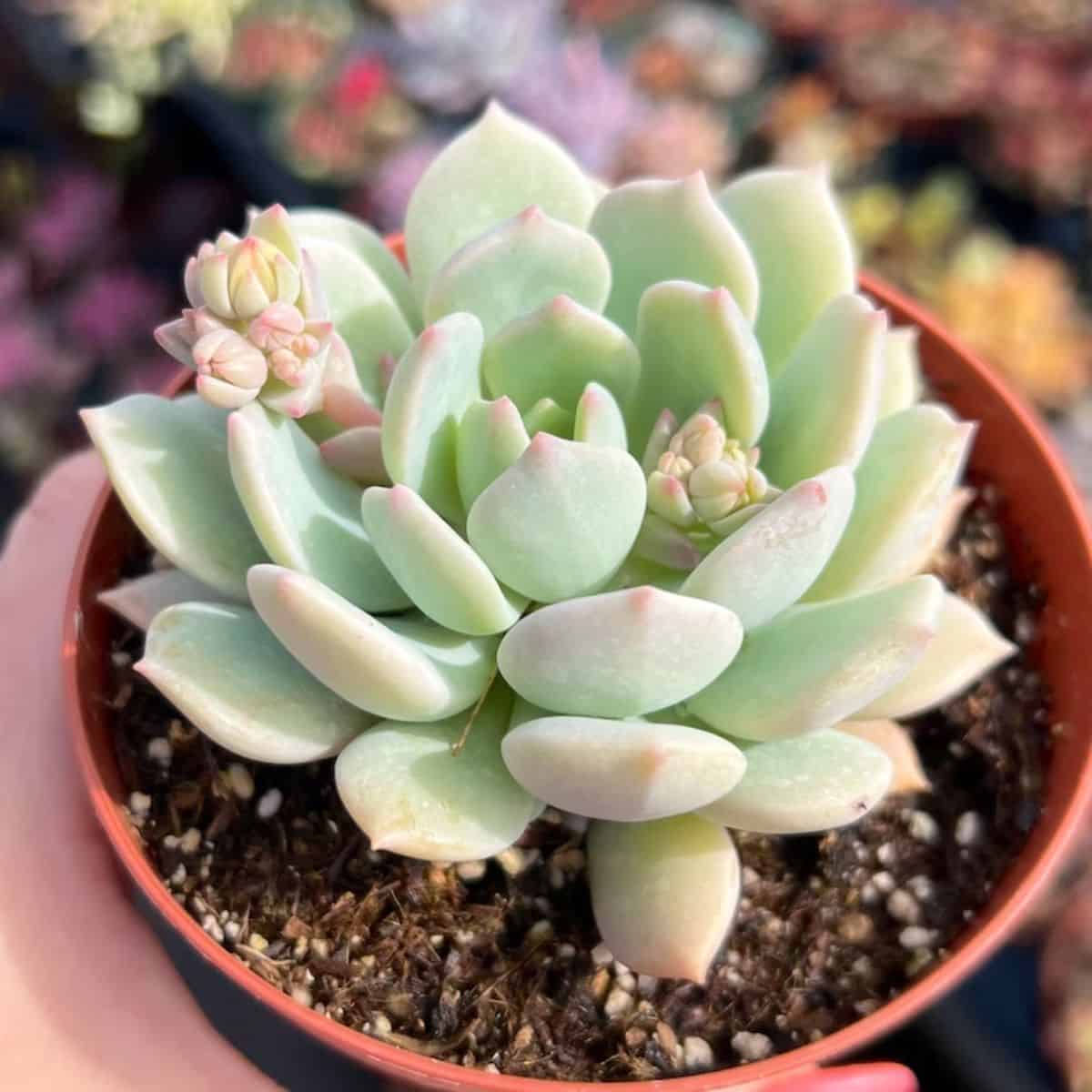
Buy it from:
| Maximum Height | 4 inches |
| Maximum Width | 10 inches |
| Watering Needs | Weekly watering |
| Soil Needs | Sandy well-drained soils |
| Light Needs | Full sun |
| Hardiness Zone(s) | Zone 10 and up |
| Bloom Color | Orange yellow |
| Bloom Type | Star-shaped |
| Leaf Type | Spatula shaped with small terminal nubs |
| Growth Type | Clustering rosette |
If you are looking for something ethereal to add to your collection, then look no further. This species is a minty green with pink nubs at the ends of the leaves. A light coating of farina gives a slight ghastly hue to the compact rosettes that cluster from the mother plant.
3. Graptoveria titubans
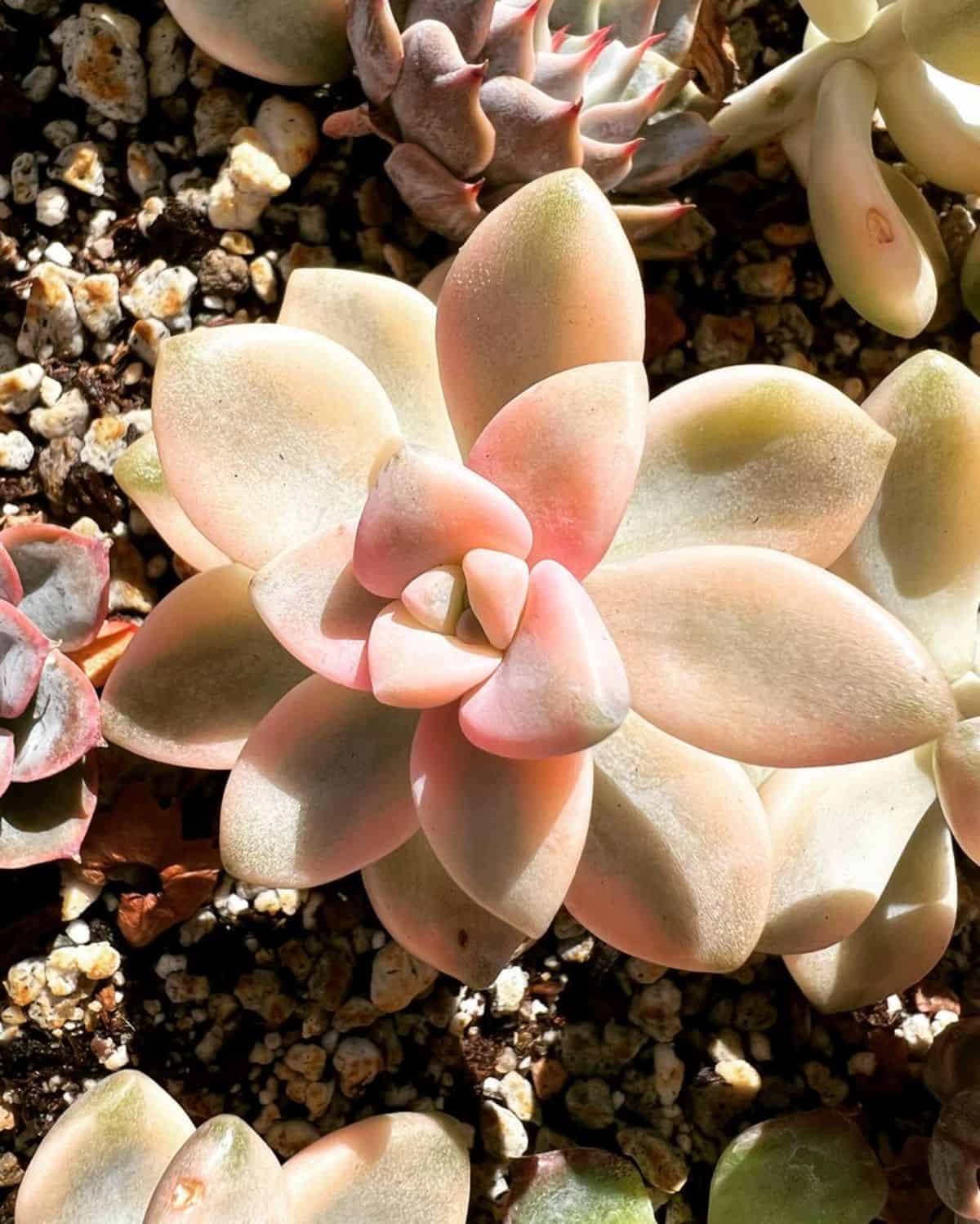
Buy it from:
| Maximum Height | 3 inches |
| Maximum Width | 3 inches |
| Watering Needs | Weekly watering |
| Soil Needs | Sandy well-drained soils |
| Light Needs | Full sun |
| Hardiness Zone(s) | Zone 10 and up |
| Bloom Color | Yellow |
| Bloom Type | Star-shaped |
| Leaf Type | Fleshy spoon-shaped leaves |
| Growth Type | Compact rosettes along ground covering stems |
More often than not, this species is found as a variegated variant rather than the parent plant, also known as the Porcelain Plant. The color is absolutely gorgeous, with a misty type of haze that gives the leaves an antiqued green look.
4. Lovely Rose
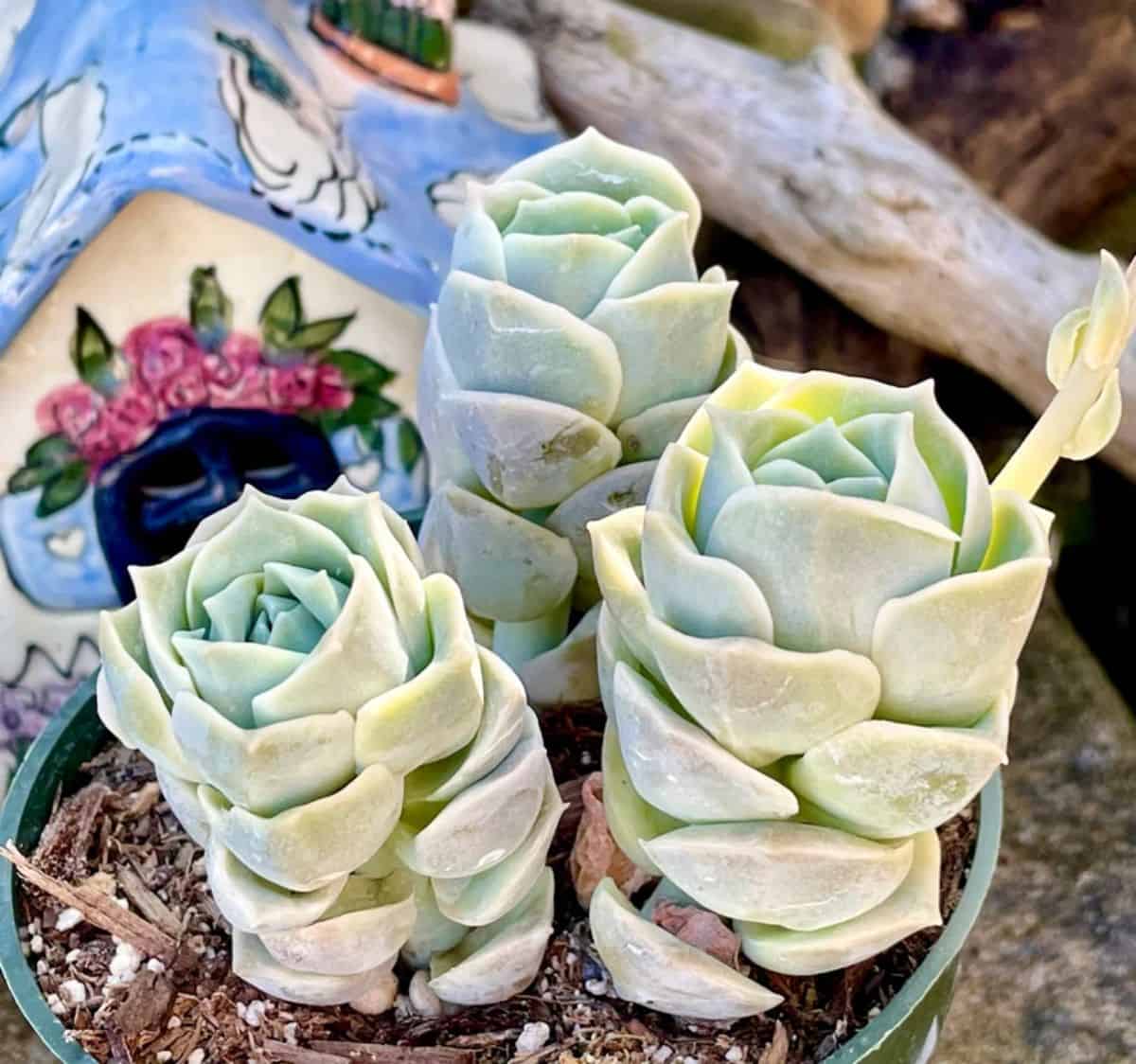
Buy it from:
| Maximum Height | 5 inches |
| Maximum Width | 3 inches |
| Watering Needs | Weekly watering |
| Soil Needs | Sandy well-drained soils |
| Light Needs | Full sun |
| Hardiness Zone(s) | Zone 9 and up |
| Bloom Color | Yellow |
| Bloom Type | Star-shaped |
| Leaf Type | Poon-shaped leaves with smooth edges and slight keel |
| Growth Type | Rosettes on bare stems |
A mutation of Graptoveria 'Titubans', Graptopetalum Lovely Rose is aptly named. The clumping rosettes grow compact and upward in a way that makes them appear like a cluster of roses. This species could be easily mistaken for the Mountain Rose, which is from the genus Greenovia. Their largest difference is that the leaves of Lovely Rose are much thicker than the species from Greenovia.
5. Opalina
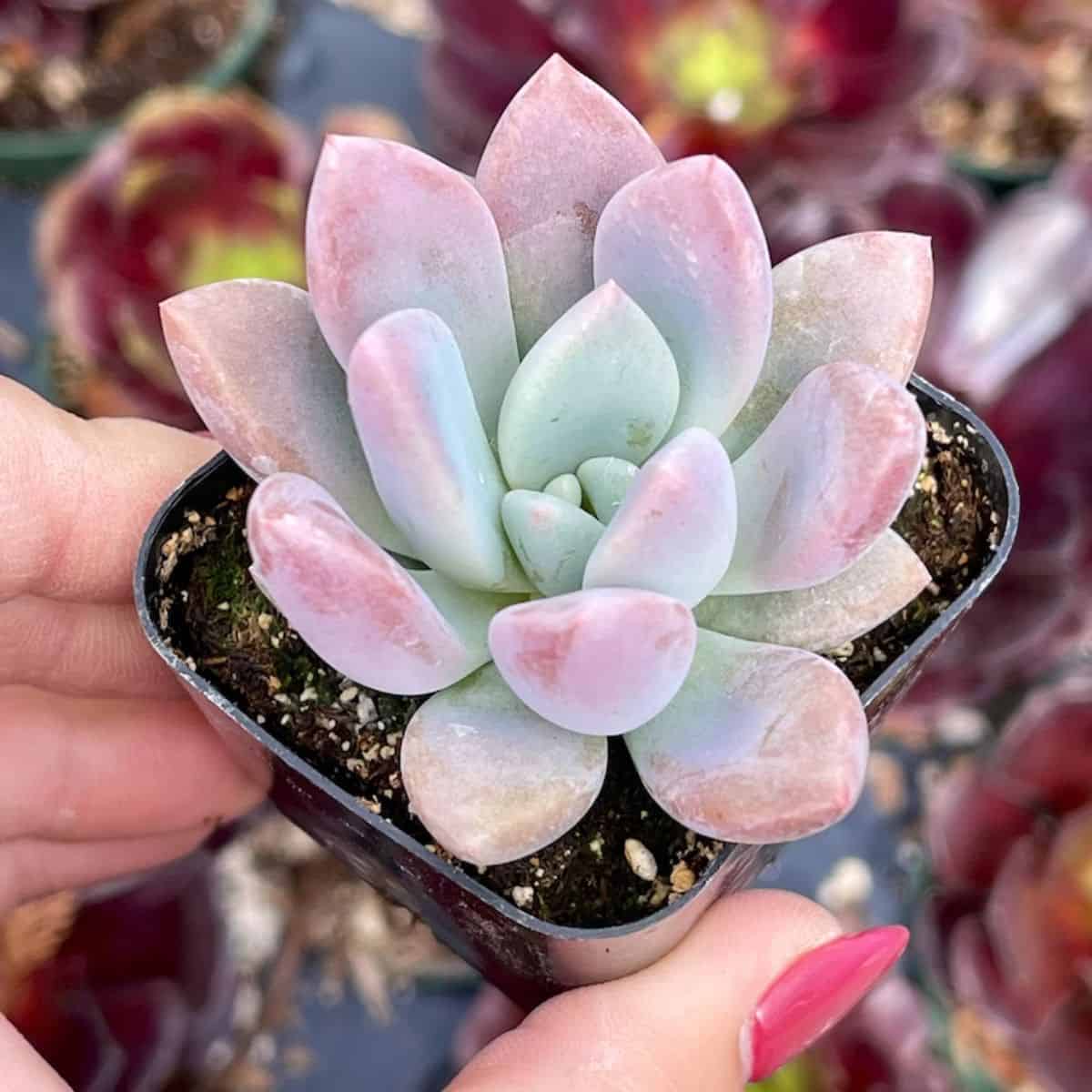
Buy it from:
| Maximum Height | 8 inches |
| Maximum Width | 6 inches |
| Watering Needs | Weekly watering |
| Soil Needs | Sandy well-drained soils |
| Light Needs | Full sun |
| Hardiness Zone(s) | Zone 9 and up |
| Bloom Color | Yellow |
| Bloom Type | Star-shaped |
| Leaf Type | Smooth fleshy spoons with some terminal nubs. |
| Growth Type | Clustered Rosette |
Opalina is a species that grows into its coloration. When young, the spoon-like leaves are much like opals: creamy white with hints of blues and greens. As they get older and have the proper amount of sunlight, you will see deeper pinks and, perchance, even sunset oranges like a fire opal!
6. Debbie
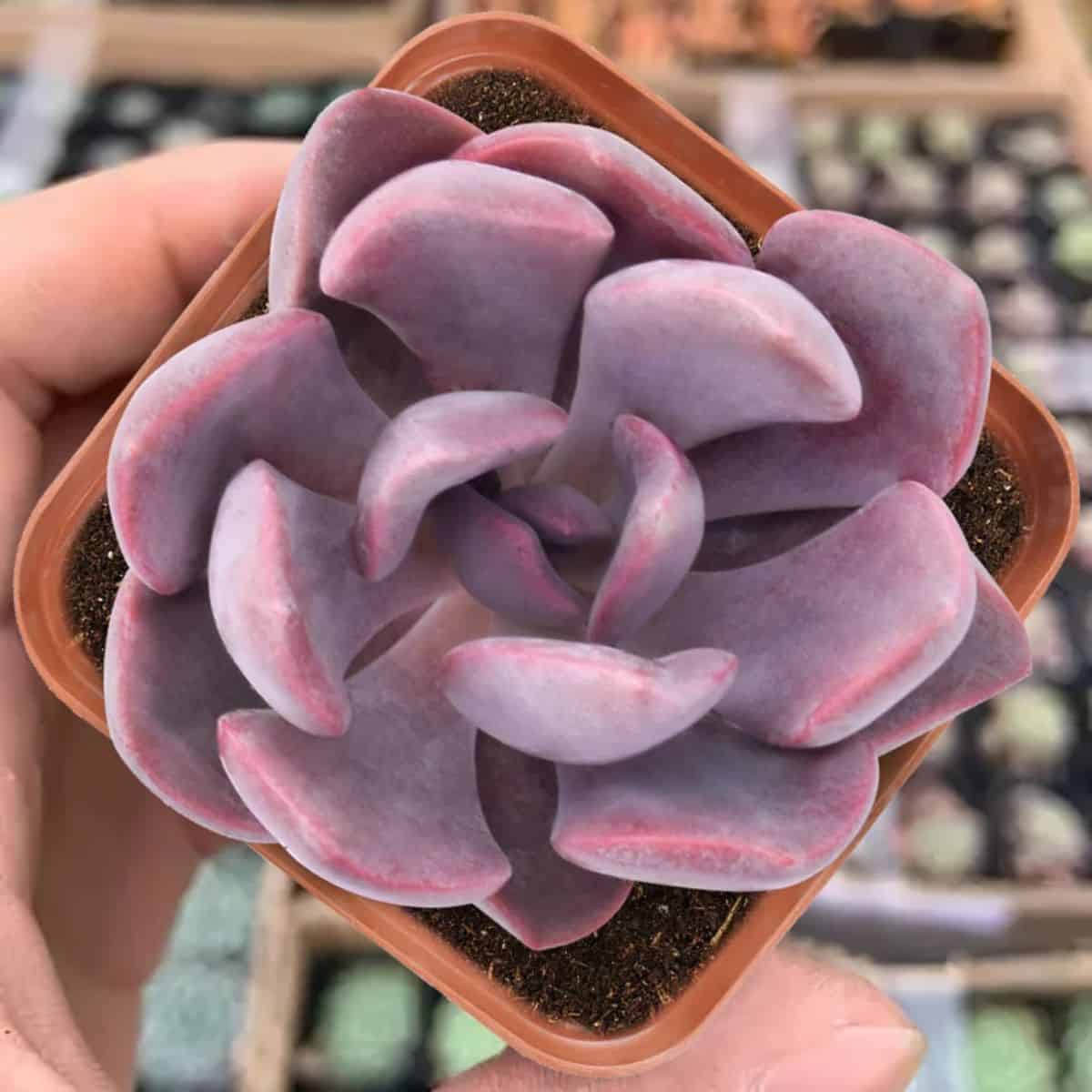
Buy it from:
| Maximum Height | 8 inches |
| Maximum Width | 8 inches |
| Watering Needs | Weekly watering |
| Soil Needs | Sandy well-drained soils |
| Light Needs | Full sun |
| Hardiness Zone(s) | Zone 10 and up |
| Bloom Color | Pink |
| Bloom Type | Star-shaped |
| Leaf Type | Upward-reaching spatula-shaped leaves |
| Growth Type | Whorled Open Rosette |
Graptoveria Debbie is a fun succulent to grow as it has an atypical whorl to the way the leaves arrange themselves. Add that to deep purple colorations and sometimes pastel violets, and there’s no way you won’t fall in love! When the farina is rubbed away, this species can take on a slightly hot ink coloration at the tips of the leaves.
7. Graptoveria jadeita
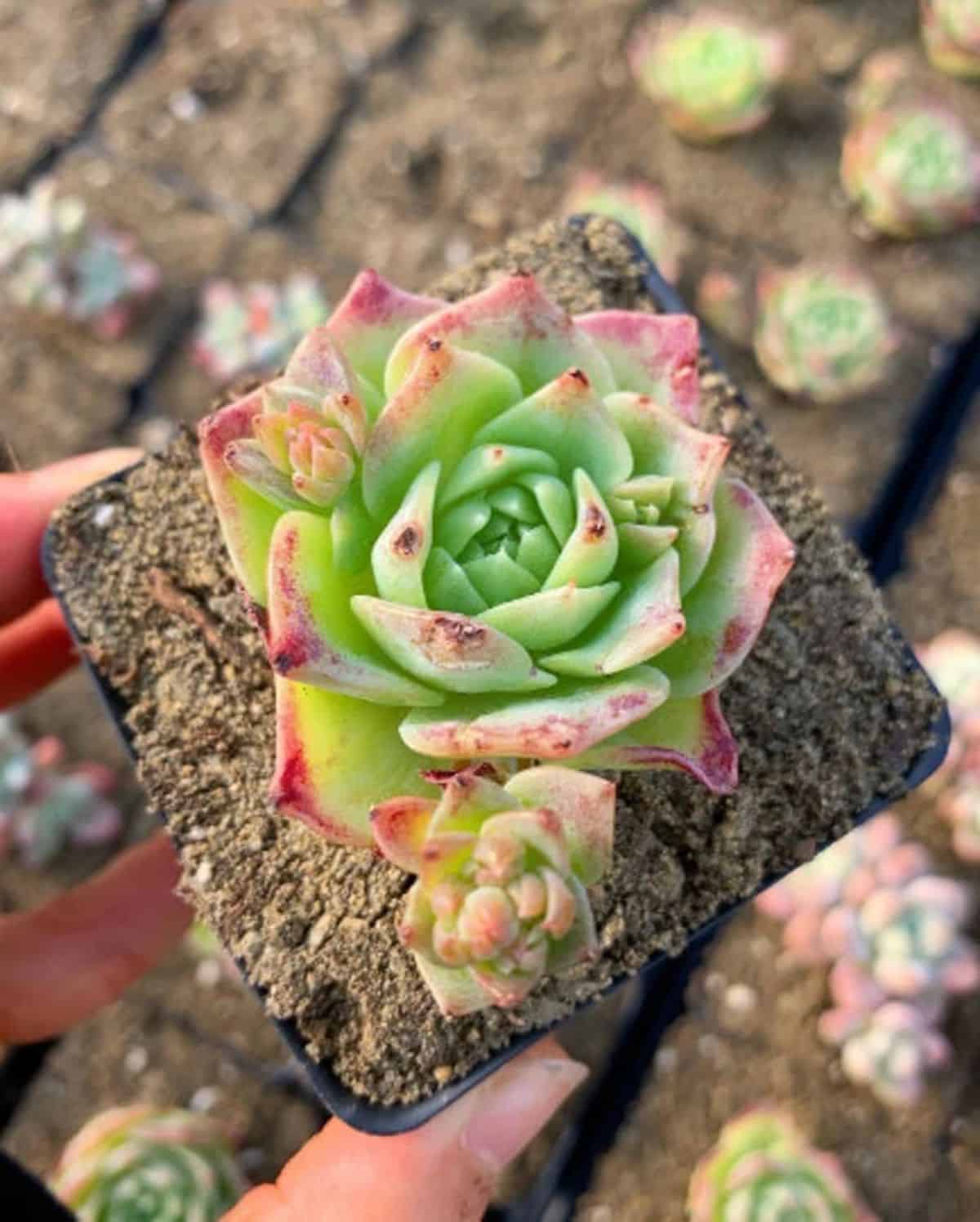
Buy it from:
| Maximum Height | 3 inches |
| Maximum Width | 5 inches |
| Watering Needs | Weekly watering |
| Soil Needs | Sandy well-drained soils |
| Light Needs | Full sun |
| Hardiness Zone(s) | Zone 9 and up |
| Bloom Color | Pink |
| Bloom Type | Star-shaped |
| Leaf Type | Alternating spoon shape with terminal point |
| Growth Type | Compact clump forming rosette |
One parent of this species is known for sure, and that is Graptopetalum macdougallii. The influence is seen in the thickness of the leaves and how quick this species is to send out stems from the mother plant. The ‘jade’ part of its name is very apropos as the rosettes take on a gorgeous jade green coloration with rare reddish coloring along the margins of the leaves.
8. Graptoveria amethorum
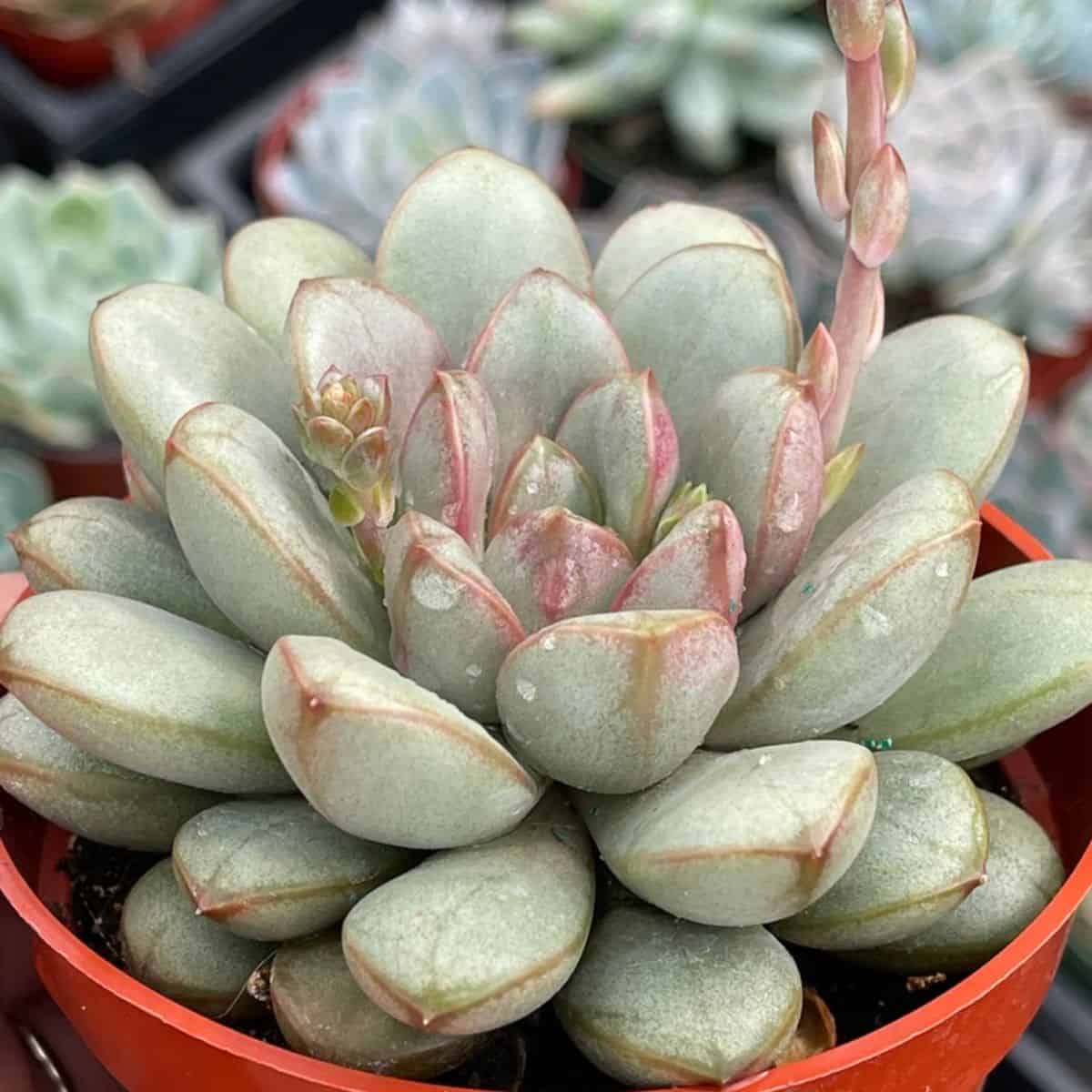
Buy it from:
| Maximum Height | 5 inches |
| Maximum Width | 4 inches |
| Watering Needs | Weekly watering |
| Soil Needs | Sandy well-drained soils |
| Light Needs | Full indirect sun |
| Hardiness Zone(s) | Zone 10 and up |
| Bloom Color | Pink |
| Bloom Type | Star-shaped |
| Leaf Type | Thick triangular leaves with rounded tips |
| Growth Type | Thick clumping rosette |
Created by Charles Uhl, this rare beauty holds many surprises. The underside of the leaves is almost hot pink with a deep maroon line along the keel, while the tops of the leaves are dark green. Some variants have pastel green leaves with maroon margins too. Because of the variation between plants, it can be hard to tell if your plant is a true G. amethorum.
9. A Grim One
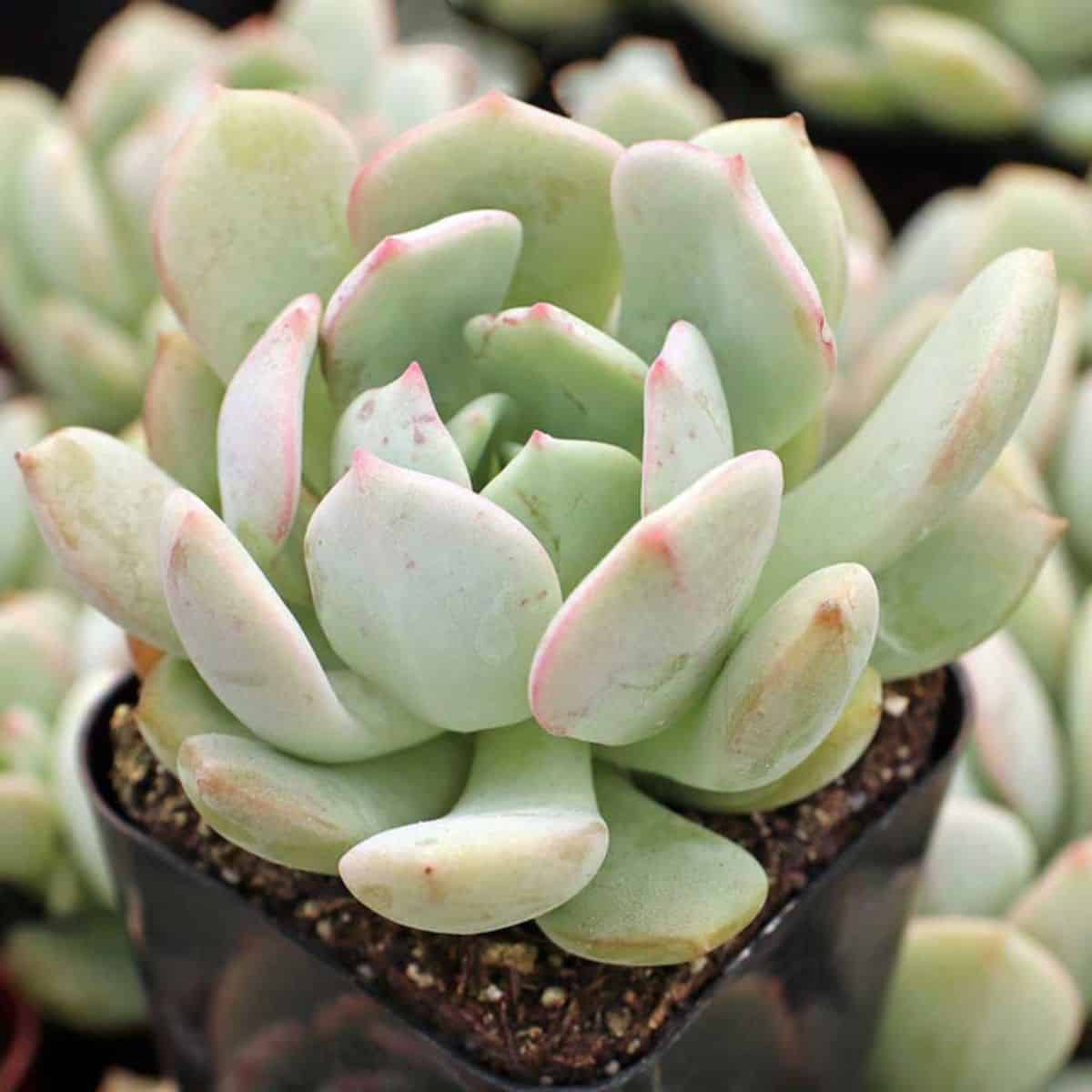
Buy it from:
| Maximum Height | 5 inches |
| Maximum Width | 6 inches |
| Watering Needs | Weekly watering |
| Soil Needs | Sandy well-drained soils |
| Light Needs | Full sun |
| Hardiness Zone(s) | Zone 10 and up |
| Bloom Color | Yellow with red spots |
| Bloom Type | Star Shaped |
| Leaf Type | Linear to spoon-shaped |
| Growth Type | Compact rosettes |
One of my favorite species of graptoveria, A Grim One is a ghostly-looking species that can almost appear to be pure white. With pastel yellow leaves at the base that fade to a more white color, this species is one of the few that contains white in its coloration. Some pink hues can appear when exposed to more sunlight which only adds to its mystery.
10. Unstable Mable
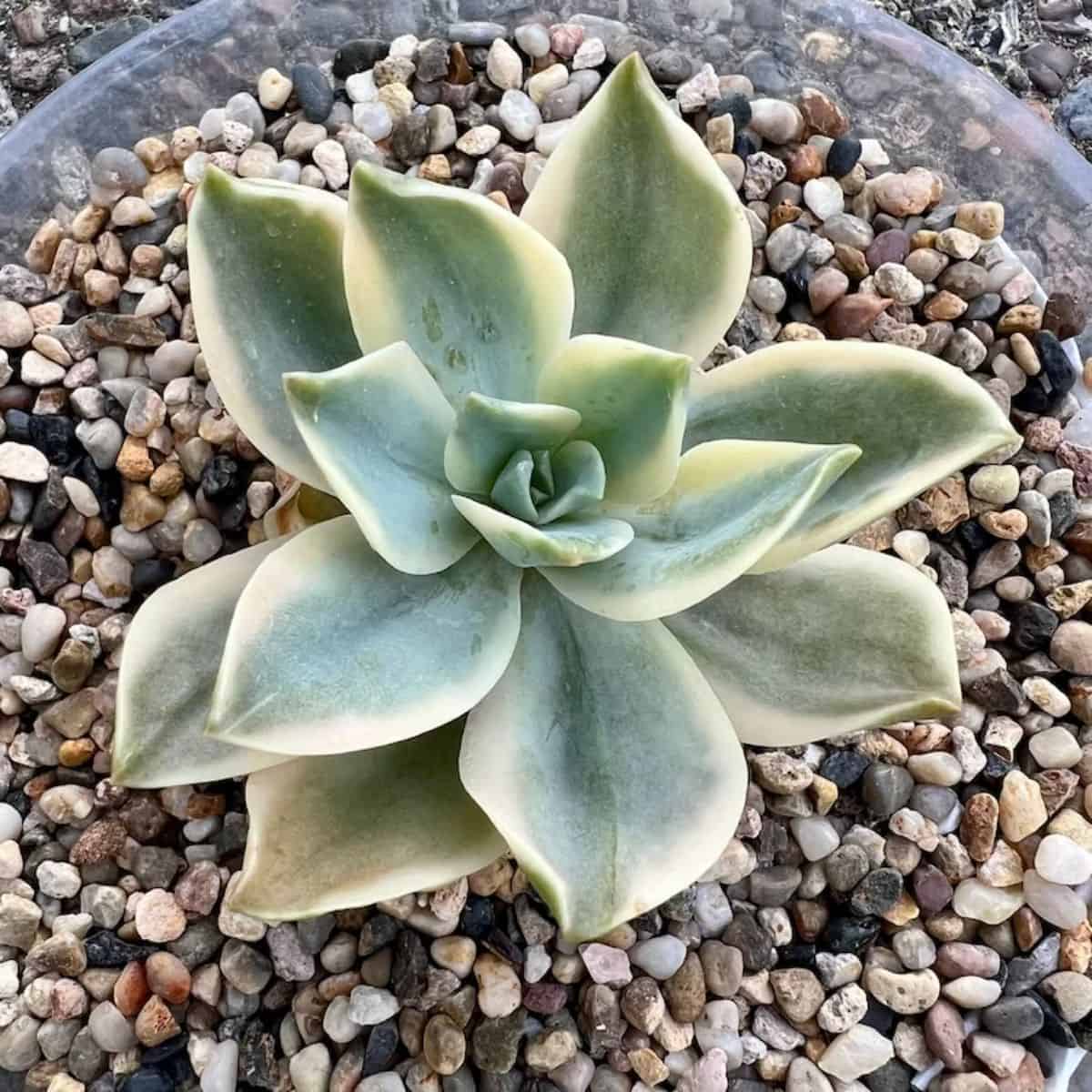
Buy it from:
| Maximum Height | 12 inches |
| Maximum Width | 12 inches |
| Watering Needs | Weekly watering |
| Soil Needs | Sandy well-drained soils |
| Light Needs | Full sun |
| Hardiness Zone(s) | Zone 9 and up |
| Bloom Color | Orange and yellow |
| Bloom Type | Star-shaped |
| Leaf Type | Large triangular leaves with some rippling along the edges |
| Growth Type | Loose open rosette |
Also known as 'Variegated Fred Ives', Unstable Mable earns the name due to the fact that this species has a hard time holding onto its leaves. Alongside the typical rainbow colors of Fred Ives described earlier, Mable brings in additional whites and yellows.
11. Thousand Cranes
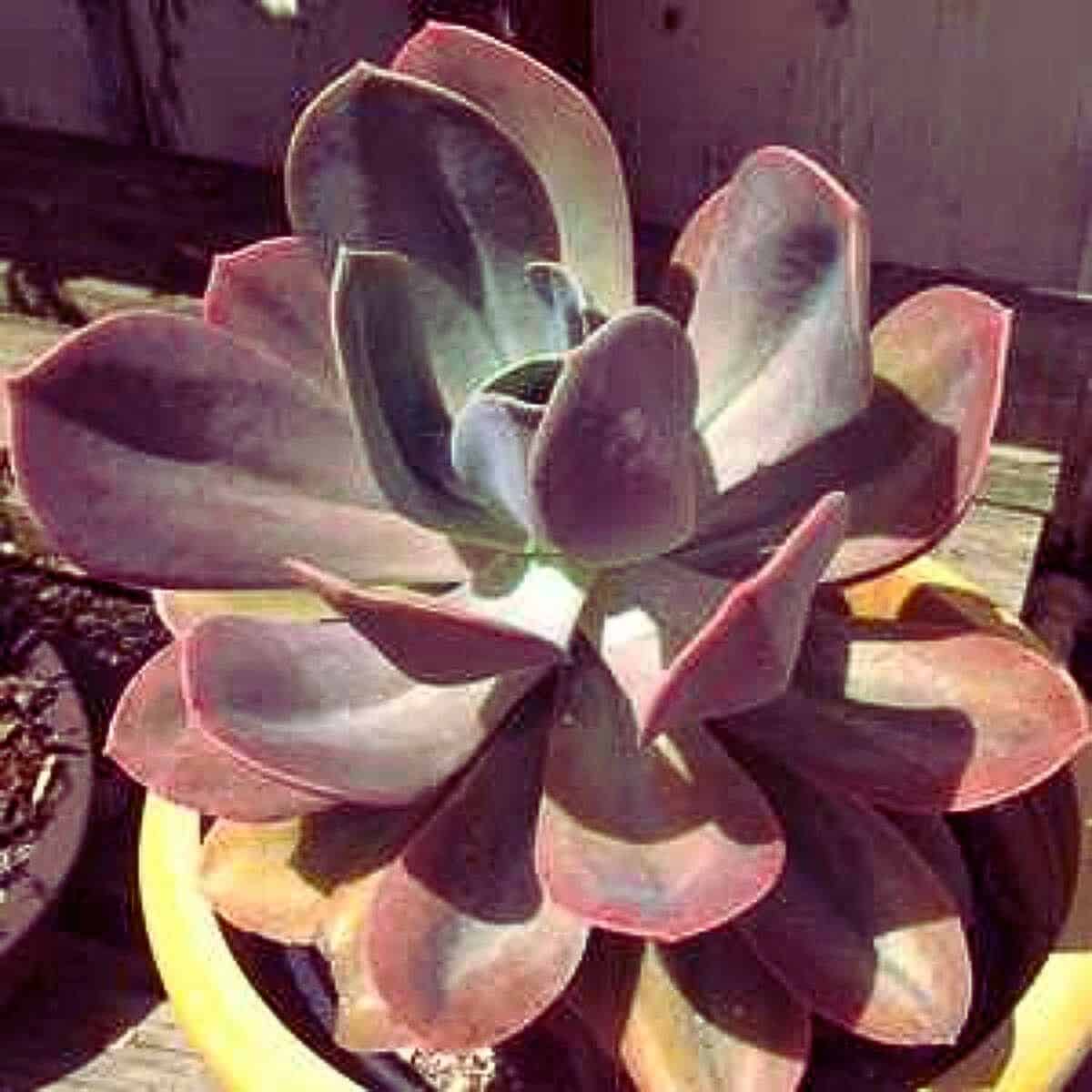
| Maximum Height | 10 inches |
| Maximum Width | 15 inches |
| Watering Needs | Weekly watering |
| Soil Needs | Sandy well-drained soils |
| Light Needs | Full sun |
| Hardiness Zone(s) | Zone 9 and up |
| Bloom Color | Pale Yellow |
| Bloom Type | Star-shaped |
| Leaf Type | Large spatula-shaped leaves |
| Growth Type | Open reaching rosette |
Thousand Cranes is one of those oddball species that defies the odds and goes above and beyond. Out of many others, it has the largest rosette out of the other species, and the leaves reach ever upwards. It looks like a collection of gems was used to paint the leaves. Older leaves look like amethysts and rubies, while younger leaves take on emerald and peridot hues.
12. Olivia
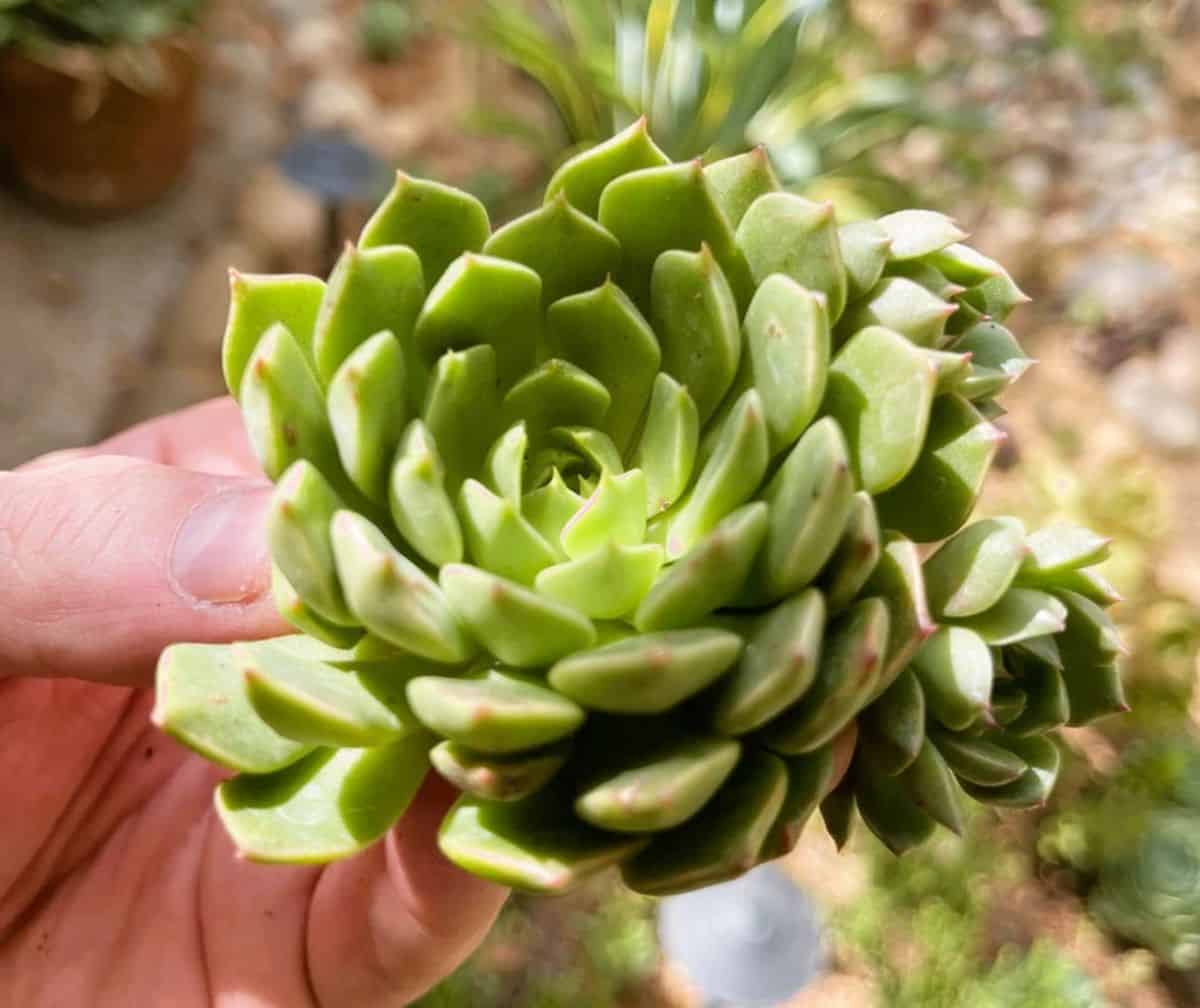
Buy it from:
| Maximum Height | 5 inches |
| Maximum Width | 6 inches |
| Watering Needs | Weekly watering |
| Soil Needs | Sandy well-drained soils |
| Light Needs | Full sun |
| Hardiness Zone(s) | Zone 10 and up |
| Bloom Color | Yellow with red mottling |
| Bloom Type | Star-shaped |
| Leaf Type | Linear that rounds to a spoon shape with terminal nubs |
| Growth Type | Upward reaching rosette |
As one of the more subdued species coloration-wise, Olivia has her own charm. The leaves are bright lime green with some farina, but the margins are the spotlight. Pale pink margins lead to hot pink nubs at the end of each leaf. Another showstopper with flowers they are pale yellow with red spots.
13. Fantome
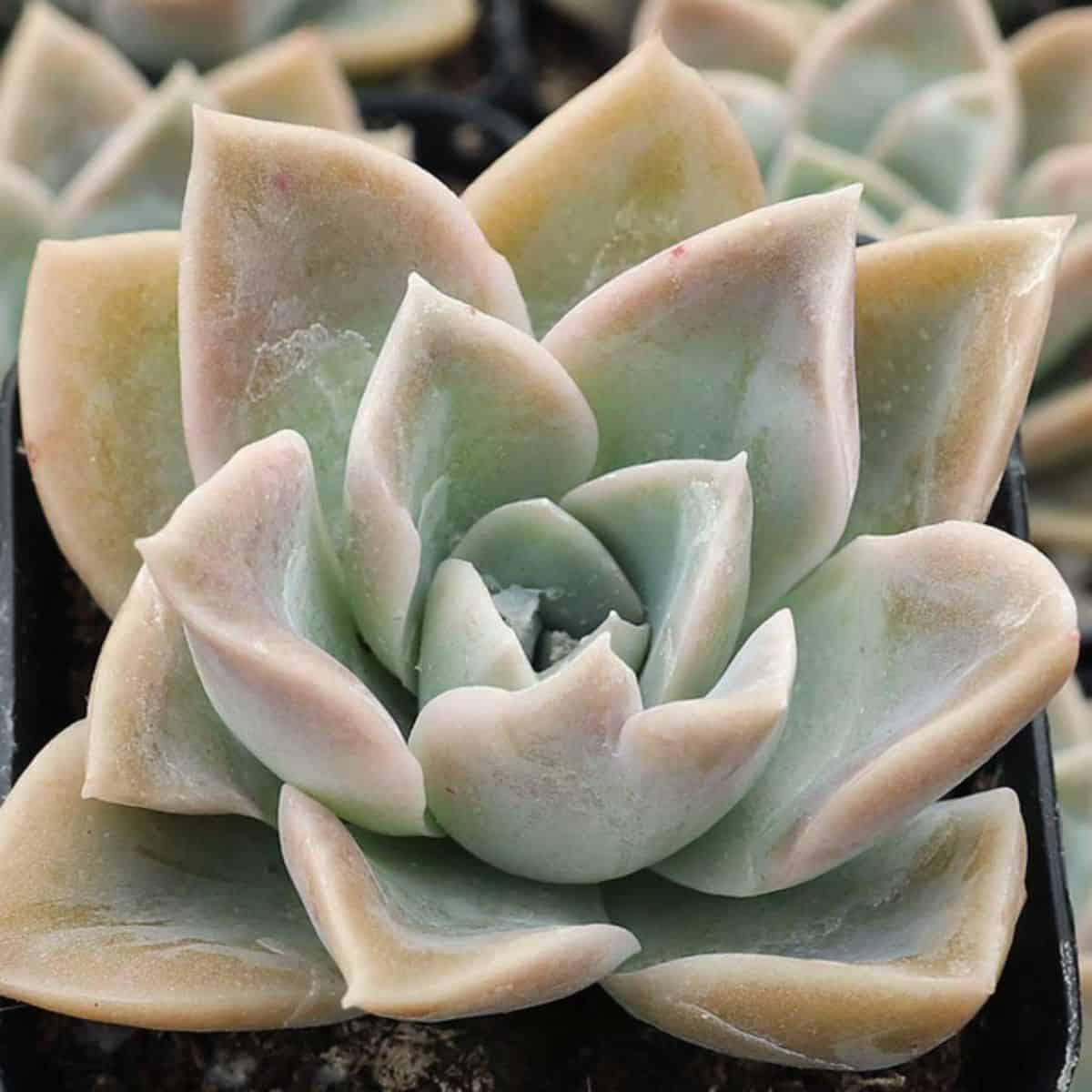
Buy it from:
| Maximum Height | 5 inches |
| Maximum Width | 4 inches |
| Watering Needs | Weekly watering |
| Soil Needs | Sandy well-drained soils |
| Light Needs | Full sun |
| Hardiness Zone(s) | Zone 10 and up |
| Bloom Color | Yellow |
| Bloom Type | Star-shaped |
| Leaf Type | Upward-reaching triangular leaves. |
| Growth Type | Easily branching open rosettes |
The rainbow coloration of this species is reminisce of Fred Ives. The center of the leaves is dark blue, which then fades to a slight pink blush that ends in golden bronze. When grown indoors, the species maintains a bluish-green color. This is another easily branching species that grows out from the base with thick, sturdy stems.
14. Acaulis
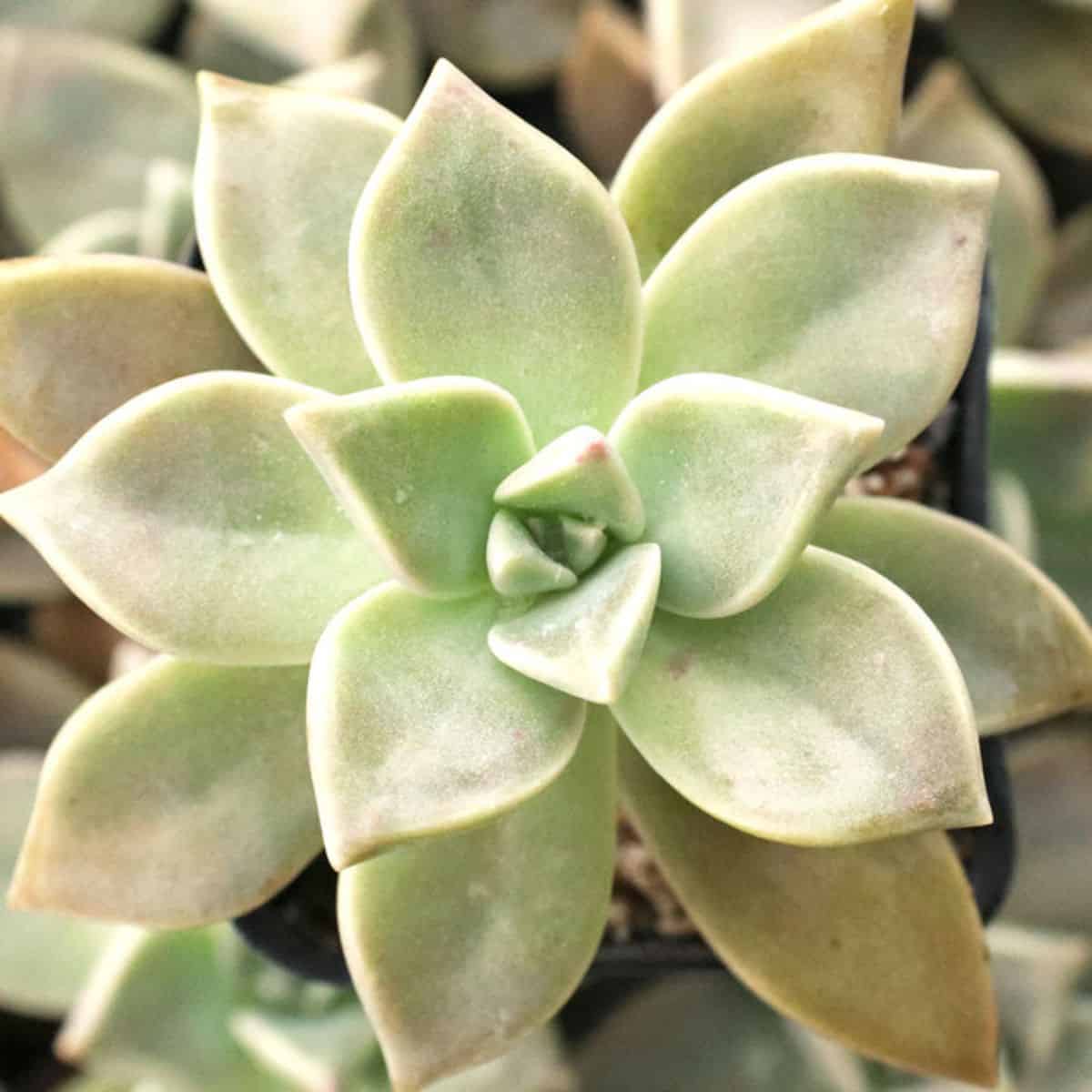
Buy it from:
| Maximum Height | 5 inches |
| Maximum Width | 4 inches |
| Watering Needs | Weekly watering |
| Soil Needs | Sandy well-drained soils |
| Light Needs | Full sun |
| Hardiness Zone(s) | Zone 10and up |
| Bloom Color | Peachy orange |
| Bloom Type | Star-shaped |
| Leaf Type | Triangular spatula-shaped leaves |
| Growth Type | Clumping rosette |
As one of the lesser-leafed species of Graptoveria, Acaulis is no less spectacular. With thick cookie-cutter leaves and a delicate spoon shape, the minty green leaves are very attractive in alternating growth patterns. Throughout the seasons, the leaves change to blushing pinks and gorgeous lavenders as well.
15. Harry Watson
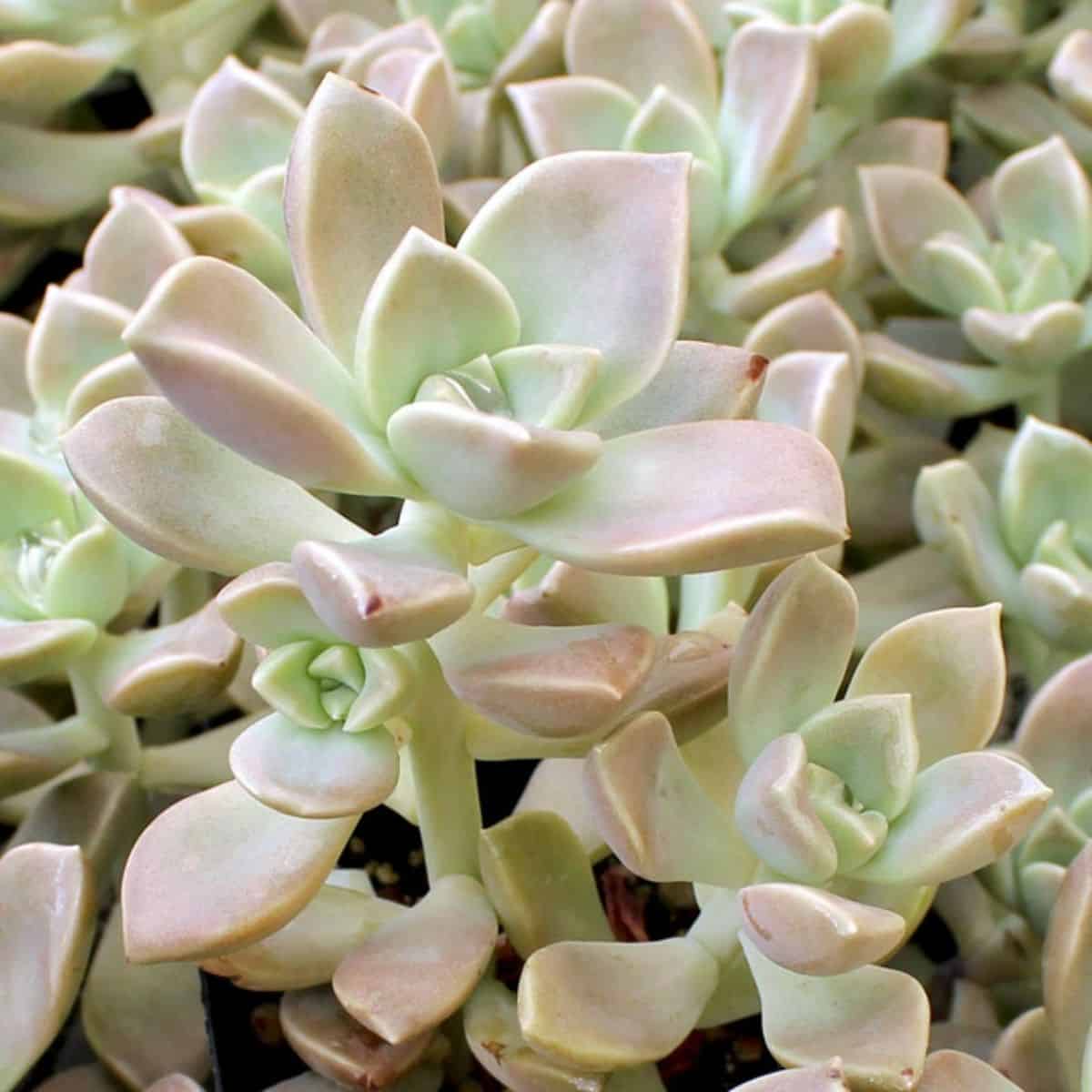
Buy it from:
| Maximum Height | 8 inches |
| Maximum Width | 6 inches |
| Watering Needs | Weekly watering |
| Soil Needs | Sandy well-drained soils |
| Light Needs | Full sun |
| Hardiness Zone(s) | Zone 9 and up |
| Bloom Color | Yellow |
| Bloom Type | Star-shaped |
| Leaf Type | Spoon-shaped upward reaching rosettes |
| Growth Type | Open Rosette |
This species is a cross between Graptopetalum paraguayense and Echeveria'Rubella'. The branches stem from the primary branch and produce open pastel rosettes with a lovely coating of farina. Because of the farina, the pastel blue that fades to pink is a gorgeous color combination.
16. Fenix
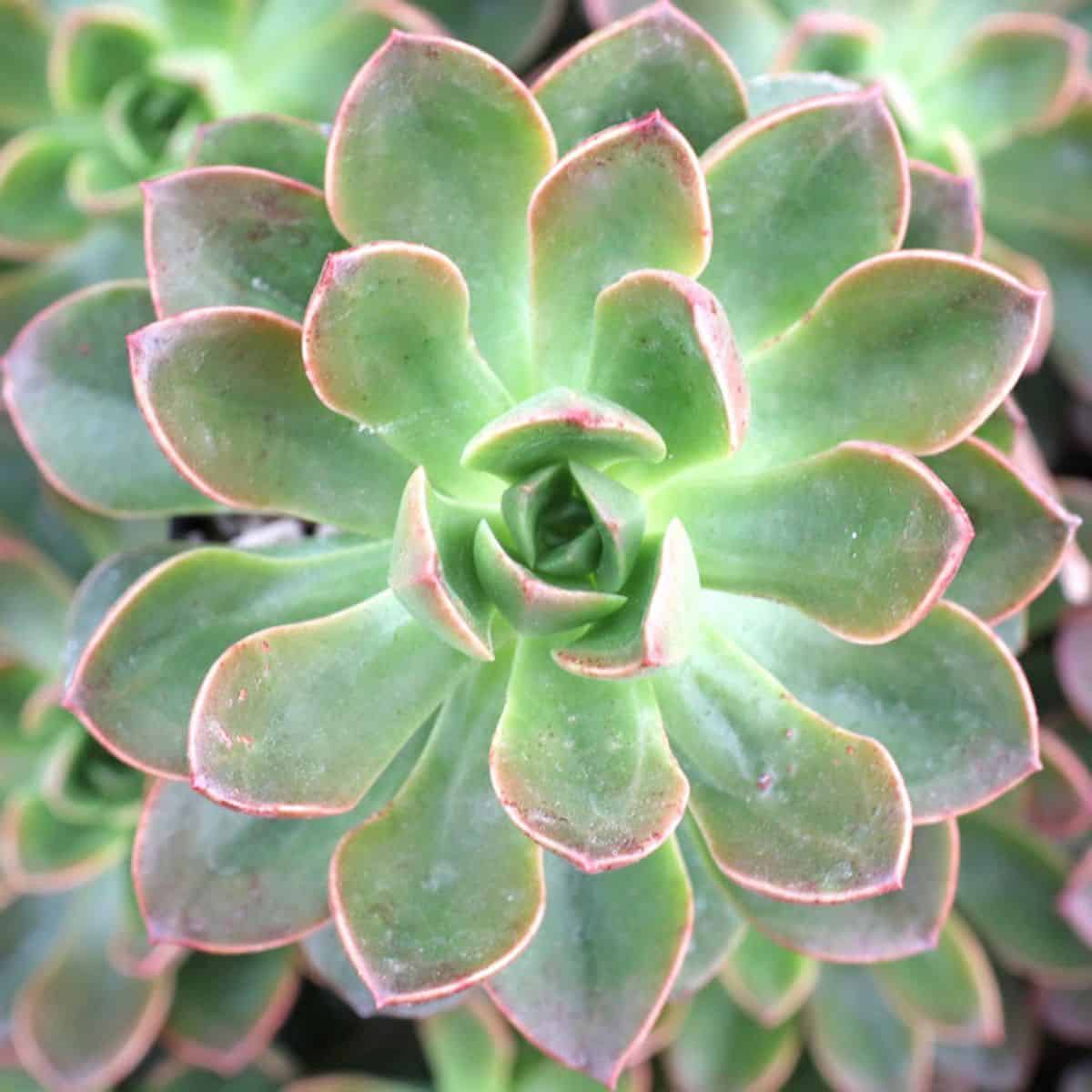
Buy it from:
| Maximum Height | 8 inches |
| Maximum Width | 4 inches |
| Watering Needs | Weekly watering |
| Soil Needs | Sandy well-drained soils |
| Light Needs | Partial Sun |
| Hardiness Zone(s) | Zone 10 and up |
| Bloom Color | Orange |
| Bloom Type | Star-shaped |
| Leaf Type | Linear at the base to spoon shape |
| Growth Type | Easily branching stem with open rosette |
Another interesting combination, this species has a very elongated-looking rosette, but one of the most interesting aspects about this species is the gorgeous rust red coloration along the margins that make it appear as though the rosette is glowing from the inside out. More mature leaves tend to lose their color and fade to a more blue-green tone with yellow edges.

